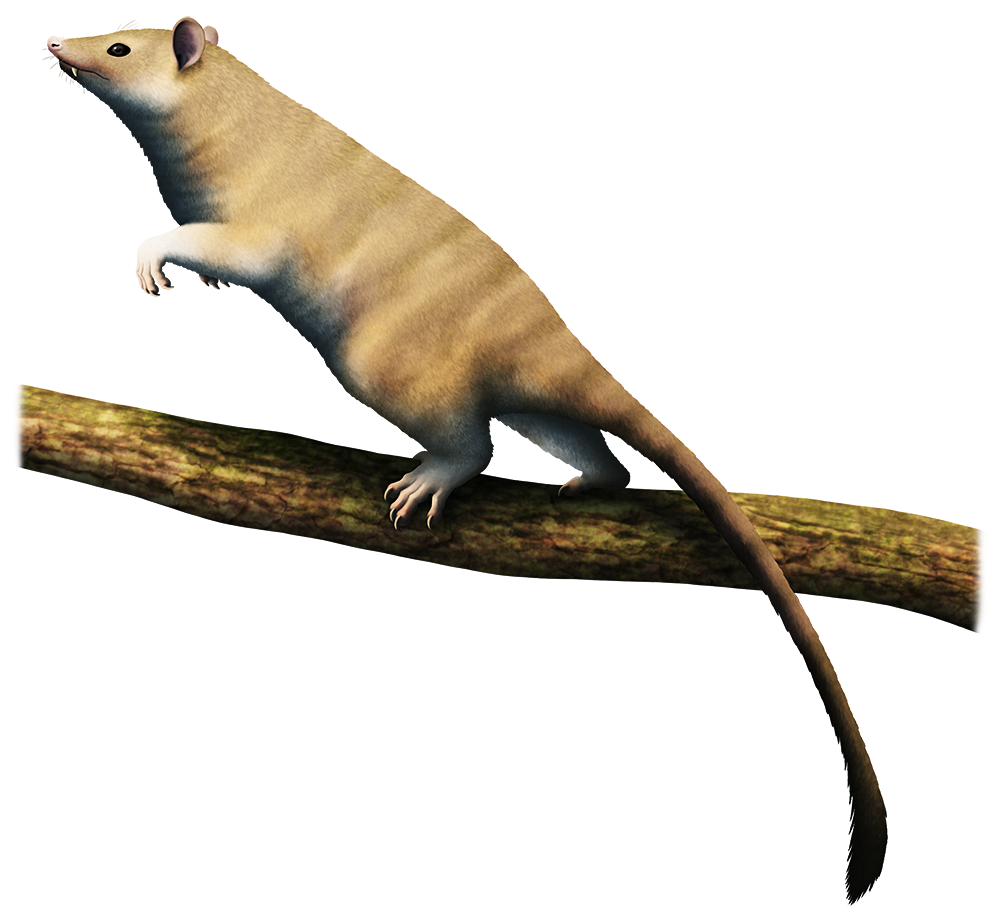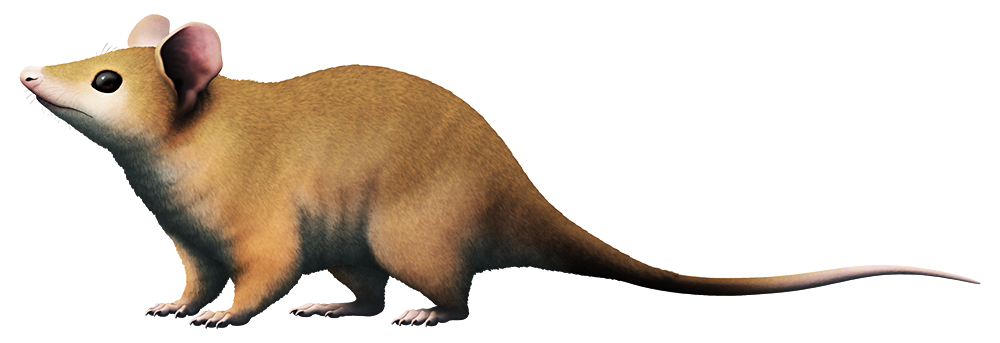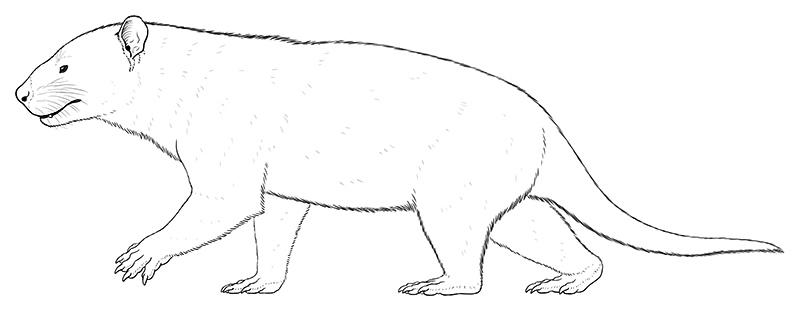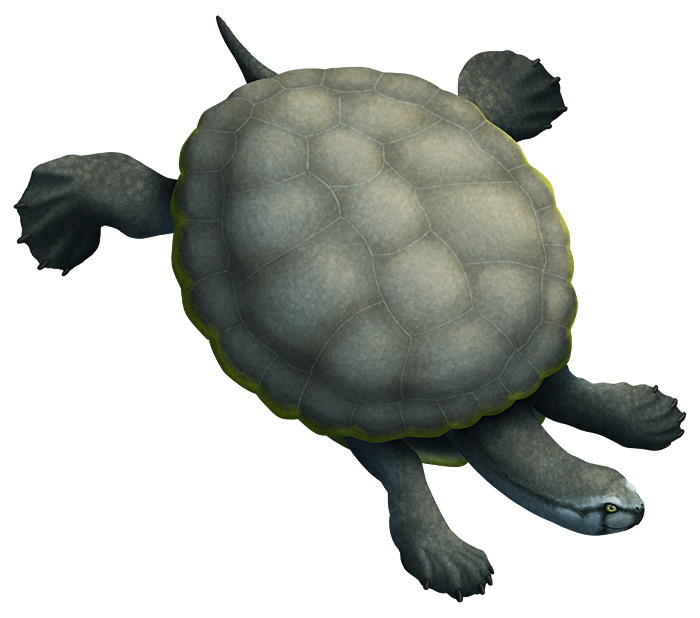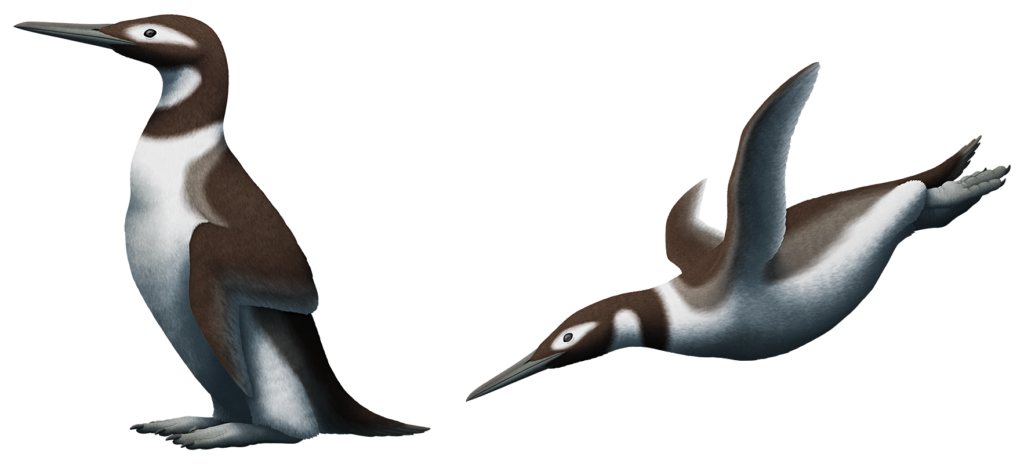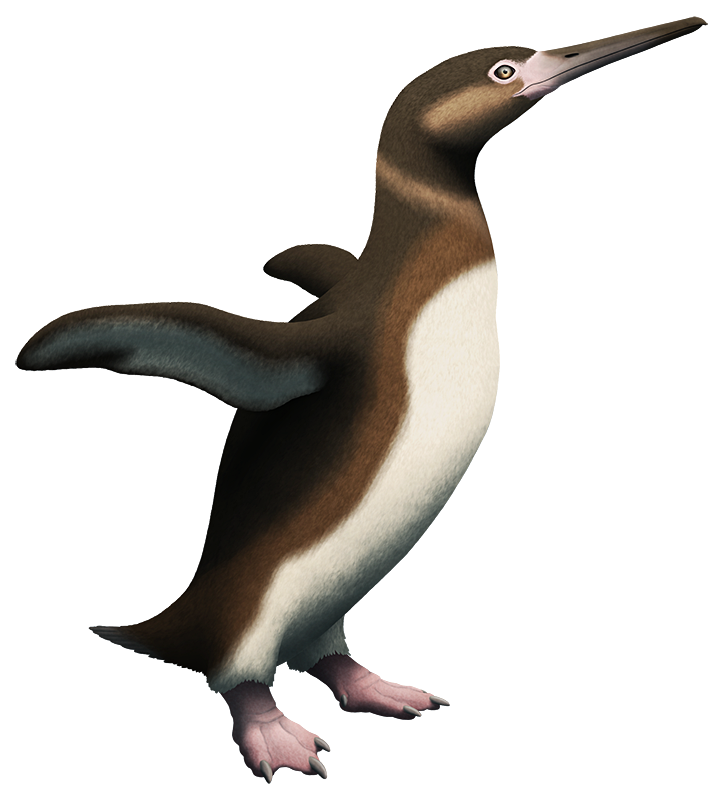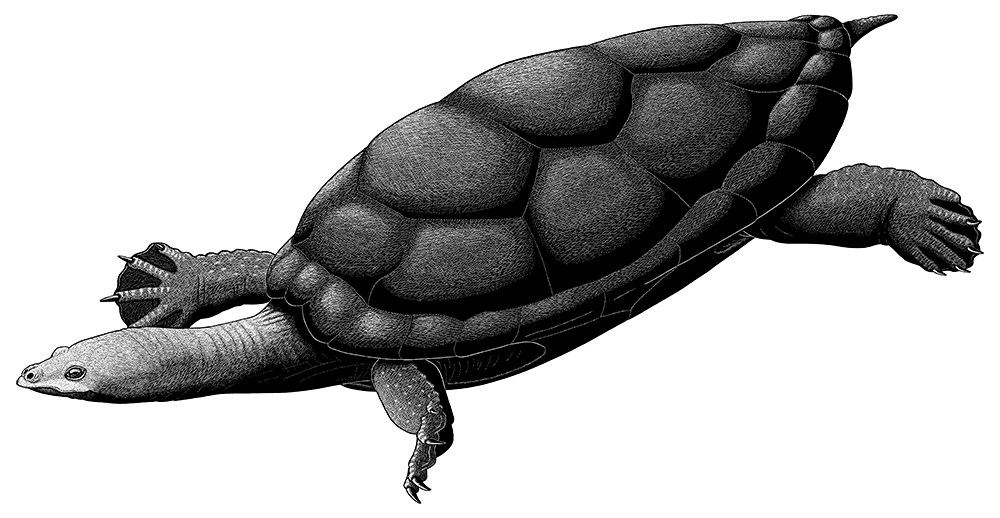Bothremydids were an extinct group of side-necked turtles that existed from the late Cretaceous to the early Miocene, between about 100 and 20 million years ago. Found across most of the world (with the exception of Antarctica and Australia) they were a diverse group occupying a range of ecological niches, inhabiting both freshwater and near-shore marine habitats.
Although their fossils are mainly just fragmentary remains like pieces of shell, Chupacabrachelys complexus here is actually known from a fairly complete skeleton.
Living in what is now western Texas, USA, during the late Cretaceous (~75 mya), it was an average-sized member of the group at around 1m long (3’3″) and was probably marine, swimming around in the shallow tropical waters of the Western Interior Seaway.
It had a particularly unusual skull for a turtle, narrow and triangular and slightly flattened, with elongated eye sockets. The paleontologists who described Chupacabrachelys thought the overall shape was vaguely reminiscent of a canid, and so that ended up inspiring its name — a reference to the mangy coyotes that are occasionally mistaken for the mythical chupacabra.

